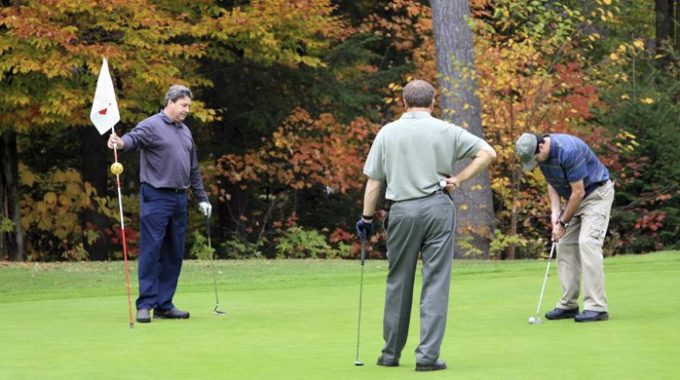If you already need a break from this fall's distance learning, you might hit up…

Golf Course Etiquette: Some Mistakes You Might Be Making
In golf, you don’t hit, body check, kick a ball at or even tag out your opponent. The game of golf calls for no physical contact between combatants, whatsoever, other than the occasional high-five when your opponent gets a hole-in-one. It’s a more genteel game, and in addition to its rules, golf has a section in the rule book on “Etiquette: Behavior on the Course.” So, here’s a look at some written and unwritten rules of golf etiquette you may not know that you’re breaking.
A golfer is not penalized for breaking rules of etiquette, since they aren’t actually rules (although consistent breaches can result in the completion committee disqualifying someone). Rather, they are more just ways of playing the game that are agreed upon by most golfers and are designed to help players to “gain maximum enjoyment out of the game,” says the Rules of Golf book. “The overriding principle is that consideration should be shown to others on the course at all times.”
That said, if you play the game as if no one else exists on the course and only your game matters, you won’t likely be asked back for another round at the member-guest of that excellent and exclusive country club. You can play the game without worrying about the other folks on the course, or you can take a look at few generally accepted rules of etiquette.
Fore-Thoughts
The etymology of the word “fore” is not exactly known (I like something I read about it being an Australian interjection from 1881), but it is what is generally said (yelled) when we are trying to warn another golfer about a golf ball heading their way. No player should deliberately hit into another, but if your shot accidently strays from its intended course, and winds up two fairways over, try to give anyone else on the course a heads up.
Keep Quiet
Other than when Bubba Watson or Ian Poulter are teeing off at the Ryder Cup and have asked for raucous crowd noise to get them pumped up, it is generally accepted that you try to keep noise or other distractions to a minimum on the golf course. That means no jingling change in your pocket on the green, noisily ripping a driver from your golf bag when your opponent is on the tee, or leaving your phone on so Freebird wails through the pines just as another golfer takes the club back for an approach shot. Keep quiet when others are playing — just as you’d like them to do during your stroke.
Ready Golf
If you haven’t heard the term “ready golf,” you need to learn it. So many things affect the pace of play in a round of golf, and slow pace of play is becoming the biggest problem in the game. Ready golf means ignore that age old etiquette maxim of “honors” for the next shot. Whoever is ready to go should go — play and keep things moving.
No Phones
Stay off the cell phone (golf course selfies are strictly verboten) and check for messages at the turn, if you must. If you are in a cart, drop off your rider at their ball and then drive to yours. Don’t mark down your score until you are waiting at the following tee. If you have a great story, keep it for during the long walk down the fairway. Please keep up with the group ahead of you, and they may eventually get the idea to speed up or let you play through.
Those may be the most common etiquette guidelines, so here are some you might not know about:
- Don’t stand close or behind someone hitting the ball. Try to get out of their peripheral vision and certainly get out of their swing path. If not, on some of the smaller teeing grounds it might result in a metal driver to the head.
- Don’t put your carry bag on the tee box (I am far too often guilty of this), it constricts the size of an already small hitting area, and the leg stands can dig into the surface.
- Don’t stand behind someone putting a ball so that you can read of the green for your putt. It is bad form and certainly distracting. The same goes for standing on someone’s through-line (line of their putt as it misses the hole and goes past it.
- Don’t carry your golf bag on the green because the extra weight can make imprints on a well-rolled putting surface. You should always leave the course as you found it, and that means fixing your divots taken out of the fairway and fixing your ball mark made after your high-arching approach that lands next to the pin. And while you have your ball mark tool out, fix a couple more. You may be coming back to putt on that green the following week.
- Bring two balls only to a crowded practice green; when hitting on a practice range, maintain a tight area to your divots — don’t spread them all over, because others will be hitting behind you. And even if you want your opponent to do well, don’t talk to his or her golf ball. Leave that conversation between them.
Follow all these etiquette guidelines, and we are good for a round together next time out.



